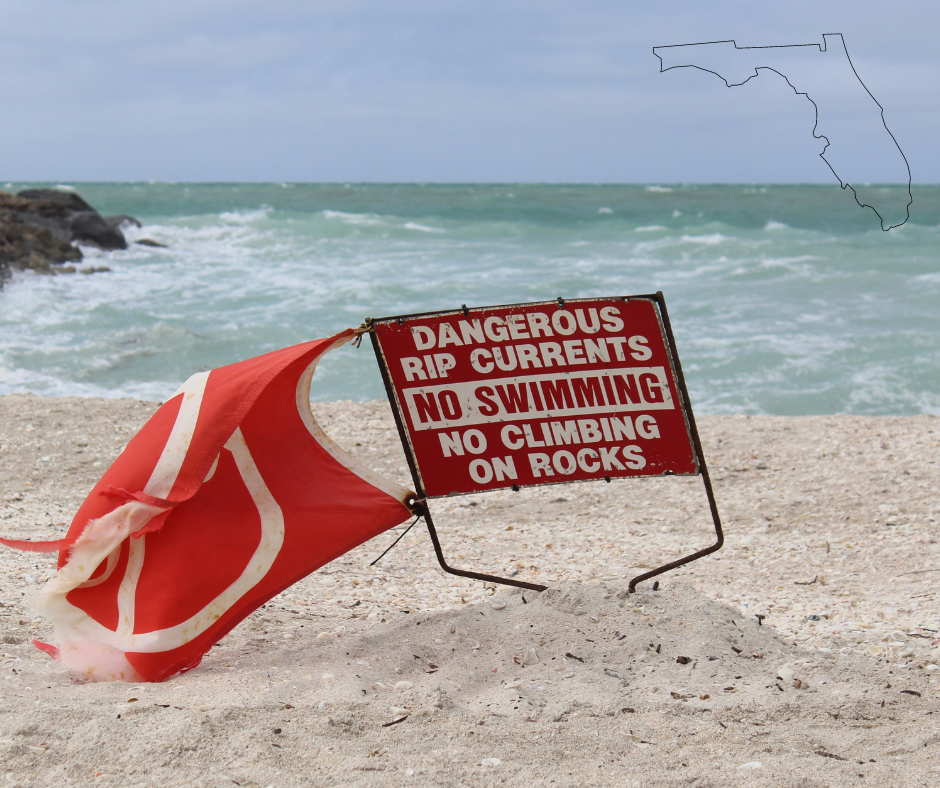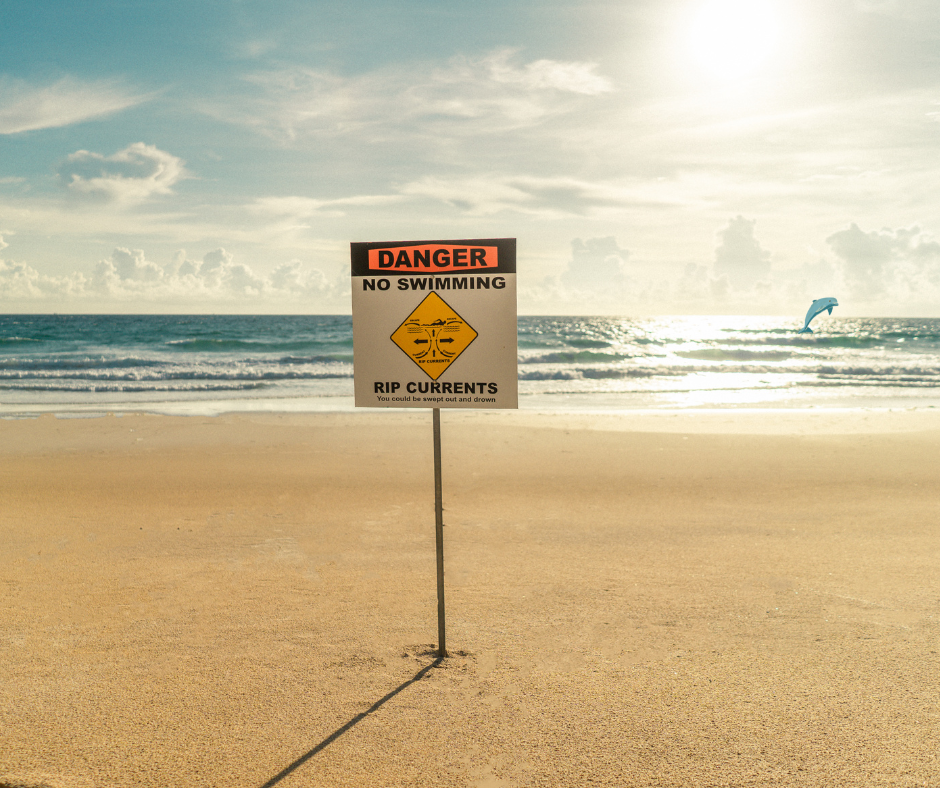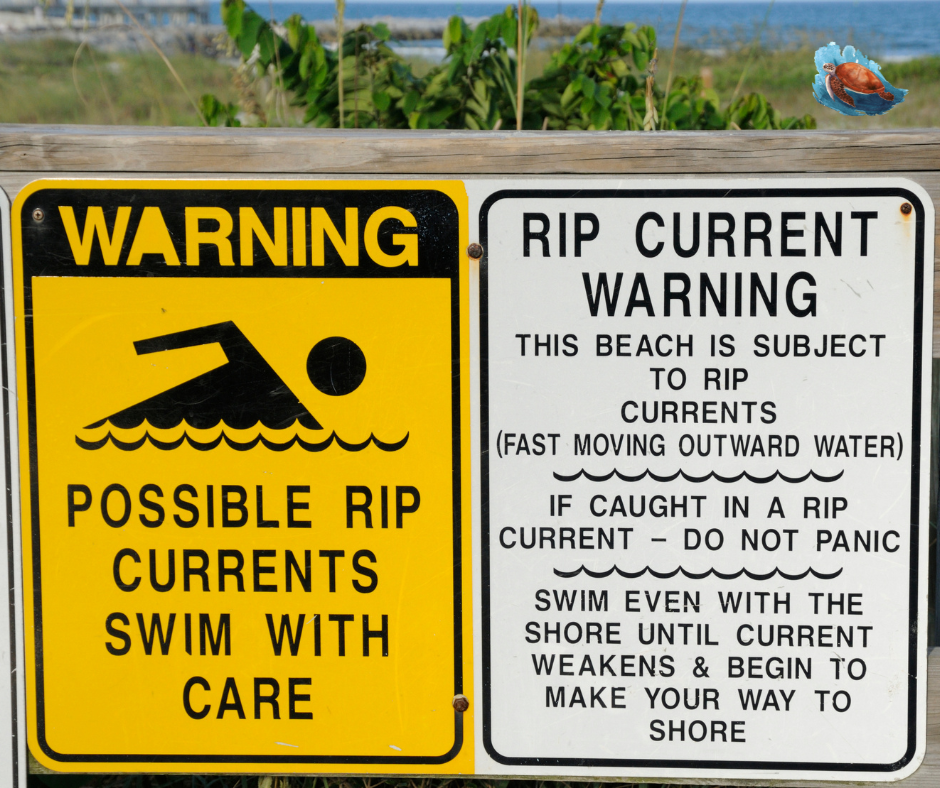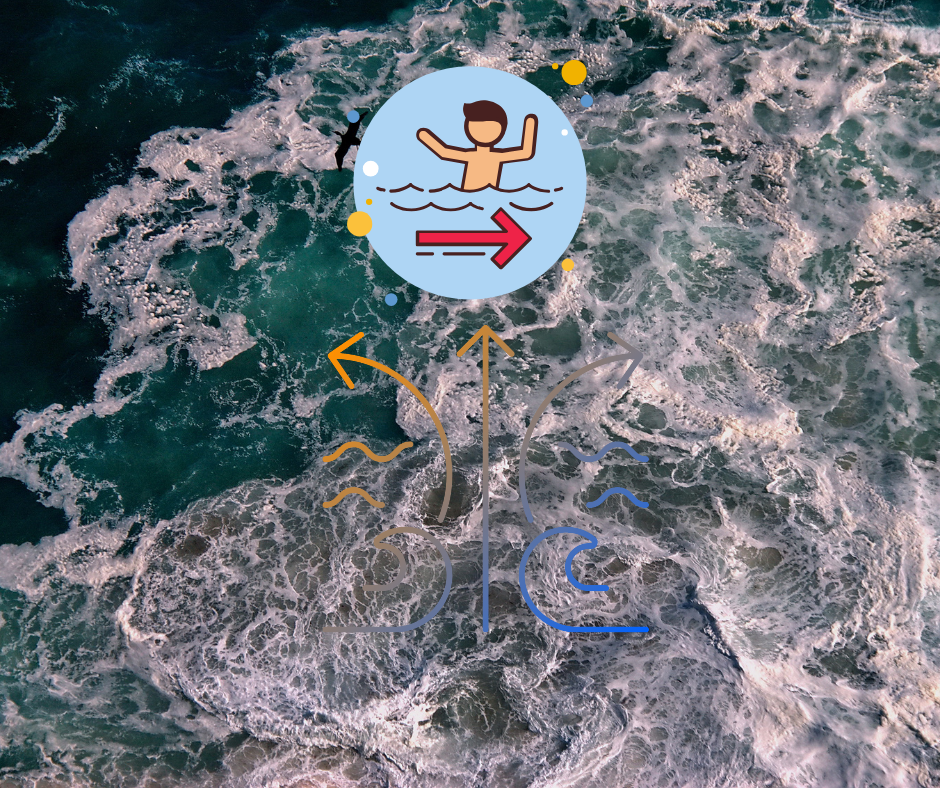Disclaimer: This post contains affiliate links. This means we may earn a commission should you choose to sign up for a program or make a purchase using these links. Read the disclaimer, terms & conditions, and privacy policy.
Florida rip currents are strong currents that pull water away from the shore. What are rip currents? They are powerful flows of water that can carry swimmers out to the open ocean. Are you asking: “How do you check for rip currents near me?” For example, if you are in Sarasota, Florida, you can look at the Sarasota Florida rip current map to see where these currents are likely to occur. Below are a few resources to help you find the Florida rip current map. Always stay informed about beach conditions and swim where lifeguards are present.
Florida Rip Currents

What Are Rip Currents?
Understanding what rip currents are is essential for beach safety. Florida rip currents are powerful, narrow channels of water that move from the shore toward the open ocean, posing significant hazards to swimmers and surfers.
How Do They Form?
Rip currents form when waves break strongly in some locations and weakly in others, creating a strong, narrow current moving away from the shore. It kind of looks like a river in the middle of the ocean, going from the beach to open waters. Usually, it has a slightly different color, too.
Stay Informed:
- Enhanced Safety: Knowing what rip currents are can prevent accidents.
- Peace of Mind: Reduces fear and anxiety when visiting the beach.
Cons of Ignorance:
- Increased Risk: Unawareness can lead to dangerous situations.
- Potential for Panic: Lack of knowledge can cause panic if caught in a rip current.
Personal Recommendation: Always swim at beaches with lifeguard stations. For example, Crescent Beach on Siesta Key is usually well-monitored and has clear signage about water conditions.
“How Do You Check for Rip Currents Near Me?”
Before heading out for a beach day, it’s crucial to know “how do you check for rip currents near me”. Here are some ways to do that:
Check Local Reports:
- Weather Websites: check Florida local weather – NOAA and the Check Rip Current Forecast at National Weather Service provide daily rip current forecasts.
- Beach Reports: Local news stations often include Florida beach conditions in their weather reports.
Use Technology:
- Apps: Download apps like Surfline or NOAA Weather Radar for real-time updates.
- Social Media: Follow local beach lifeguard stations for timely updates and warnings.
Personal Recommendation: Try visiting Manasota Key Beach. It’s less crowded and has lifeguards on duty.
Why Are Rip Currents So Dangerous?

Understanding why are rip currents so dangerous is critical for swimmers and surfers. Rip currents can be life-threatening due to their speed, strength, and deceptive appearance.
Speed and Strength: Florida rip currents can move at speeds up to 8 feet per second, making it easy for swimmers to be pulled out to deeper waters quickly.
Deceptive Appearance: Rip currents often look like calm patches of water, leading swimmers into a false sense of security.
Sarasota Florida Rip Current Map
The Sarasota Florida Rip Current Map can be checked here for anyone planning to enjoy the stunning beaches along Florida’s Gulf Coast. This website lets you check any Florida beach weather and rip current alerts. Rip currents, powerful and narrow channels of fast-moving water, can quickly and unexpectedly pull swimmers out to the open ocean. Utilizing a rip current map can help you stay informed and safe.
Understanding Florida Rip Currents
Nature of Rip Currents: Florida rip currents are caused by the water returning to the ocean after being pushed onto the shore by waves. They can form at any beach with breaking waves and are particularly common around piers, jetties, and sandbars. Despite their name, rip currents are not “riptides,” which are related to tidal changes. Instead, rip currents are localized and temporary, often occurring without warning.
Dangers of Rip Currents: These currents can move up to 8 feet per second, faster than an Olympic swimmer. They can occur suddenly and are often difficult to spot from the shore. The strength and speed of rip currents can exhaust swimmers, making it difficult to return to shore safely.
Before Going to the Beach
Stay Informed: The Florida Rip Current Map provides real-time information about the locations and conditions of rip currents along Sarasota’s beaches. By staying informed about current conditions, people can make safer decisions about where and when to swim.
Accessing Lifeguard Support: Beaches like Siesta Key and Lido Key have lifeguard stations that regularly monitor rip current conditions and provide updates. These stations often display the rip current map, making it easy for visitors to stay informed.
Digital Tools: In addition to physical maps available at the beach, digital resources are also invaluable.
Rip Current Safety Tips
Knowing Florida rip current safety tips can make your beach experience safer and more enjoyable. Here are some essential safety tips:
Before You Swim:
- Check Conditions: Always check the rip current forecast.
- Swim Near Lifeguards: Choose beaches with lifeguards and swim within their designated areas.
On the Florida Beach:
- Look for Signs: Pay attention to signs and flags that indicate rip current risks.
- Stay Informed: Talk to lifeguards about current water conditions.
If Caught in a Rip Current:

Stay Calm: Panic can lead to exhaustion.
Float and Signal: Float on your back and signal for help.
Swim Parallel: Swim parallel to the shore to escape the narrow current.
Personal Recommendation: Visit Turtle Beach, which is less crowded and has lifeguards on duty.
Types of Florida Rip Currents
Understanding the types of rip currents is essential for beach safety. Rip currents vary in formation and behavior, making it important to know the different types to stay safe.
Fixed Rip Currents: These occur in the same place for long periods due to permanent features like piers, jetties, or sandbars.
Flash Rip Currents: These appear suddenly and can be extremely dangerous due to sudden changes in wave conditions.
Traveling Rip Currents: These move along the shoreline, making them harder to predict. They form when waves break at an angle to the shore.
Channel Rip Currents: These are found in channels between sandbars and are typically stronger due to the narrow passage of water.
Understanding types of rip currents helps with better preparedness, which increases your preparedness for different scenarios.
How Do You Escape a Rip Current?

Knowing how do you escape a rip current can be lifesaving. Here’s what to do if you find yourself caught in one of Florida rip currents:
Stay Calm: Panic can lead to exhaustion. Keep calm and conserve energy.
Float and Signal: Float on your back to keep your head above water and signal for help by waving your arms.
Swim Parallel: Swim parallel to the shore to break free from the current’s grip.
Once Out, Swim Back: After escaping the rip current, swim diagonally back to the shore. If too tired, float and signal for help until assistance arrives.
Personal Recommendation: Stick to beaches, where lifeguards are present to help in emergencies and provide safety tips.
What Are the Chances of Survival in Rip Tide?
What are the chances of survival in rip tide, well..t largely depends on knowledge and response. When swimmers know how to respond, the chances of surviving a rip current are high. Panic can lead to exhaustion and drowning. Swimming against the current can tire swimmers quickly. Not recognizing the signs of a rip current can be fatal.
Does Siesta Key Have Rip Currents?
Does Siesta Key have rip currents? Yes, rip currents can occur at Siesta Key. These natural phenomena are influenced by weather, tides, and underwater topography.
Safety Measures at Siesta Key and any other beach:
- Lifeguards: Siesta Key Beach is well-patrolled by lifeguards who monitor for rip currents.
- Flag System: The beach uses a flag system to indicate water conditions.
- Education: Lifeguard stations provide educational materials on rip current safety.
If you are going to Siesta Key Beach, remember to check the signage. Also, there is often limited parking due to Siesta Key being one of the most famous beaches. It can be very busy during peak seasons.
Useful Links:
Mote Marine Laboratory Beach Conditions Reports
Best Hiking Trails in Sarasota Florida
Siesta Key Beach: A Slice of Paradise in Sarasota, Florida
Considering selling your Florida property? Get a Free Home Value Estimate.
As a Sarasota realtor, I’m here to assist you with all your Florida real estate needs. Whether you want to buy your dream home in Florida or sell your property, I’m dedicated to providing expert guidance and personalized service. My goal is to ensure that your real estate experience is seamless and rewarding. Feel free to reach out for any assistance with buying or selling property in Sunshine State.
Tetyana Hanna, Sarasota REALTOR®
Keller Williams Realty Select
970-765-5107
Get in Touch:
Disclaimer: This post contains affiliate links. This means we may earn a commission should you choose to sign up for a program or make a purchase using these links. Read the disclaimer, terms & conditions, and privacy policy.










